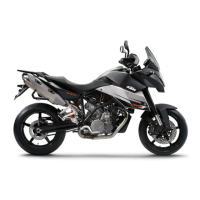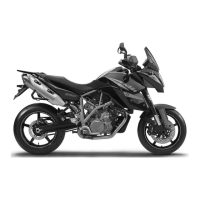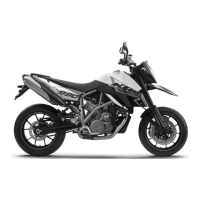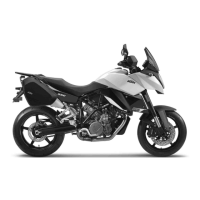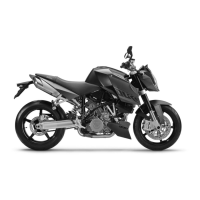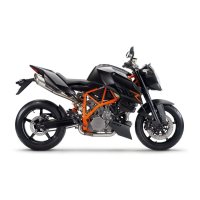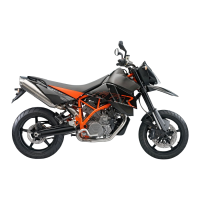Why is the combination instrument display blank on my KTM 990 Supermoto R?
- SSierra MyersSep 6, 2025
If the combination instrument on your KTM Motorcycle shows nothing in the display, the Fuse ACC1, CLOCK may be blown, so replace the fuse.
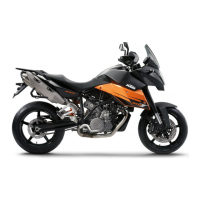
Why is the combination instrument display blank on my KTM 990 Supermoto R?
If the combination instrument on your KTM Motorcycle shows nothing in the display, the Fuse ACC1, CLOCK may be blown, so replace the fuse.
Why does the battery keep dying on my KTM 990 Supermoto R Motorcycle?
If your KTM Motorcycle's battery is discharged, it might be because the ignition was not switched off when the vehicle was parked, so recharge the battery. Another reason could be that the battery is not charged by the alternator, so check the charging voltage.
Why does my KTM Motorcycle start in gear?
If the engine of your KTM Motorcycle turns even when a gear is engaged, it could indicate a defect in the safety start system, so check the safety start system. Alternatively, the coupling of the fuel hose connection may not be connected, so reconnect it. Another possible cause is an oxidized socket connector of the cable harness, so clean the socket connector and treat it with contact spray.
Why is the speedometer not working on my KTM 990 Supermoto R?
If the speedometer in the combination instrument of your KTM Motorcycle is not functioning, the wiring harness of the wheel revolution counter may be damaged or the plug-in connector is oxidized, so check the wheel speed sensor.
Why does my KTM 990 Supermoto R engine have too little power?
If your KTM Motorcycle engine has too little power, consider these possible causes: * The air filter may be very dirty, so change it. * There may be a defect in the fuel injection system, so read out the fault memory using the KTM diagnostics tool. * The ignition curve for low octane fuel may be activated, so refuel with fuel with an octane rating of 95 or higher. * Also connect plug-in connector.
| Engine Type | V-twin, 4-stroke |
|---|---|
| Displacement | 999 cc |
| Transmission | 6-speed |
| Seat Height | 875 mm |
| Dry Weight | 191 kg |
| Bore x Stroke | 101 mm x 62.4 mm |
| Compression Ratio | 11.5:1 |
| Fuel System | Electronic Fuel Injection |
| Cooling System | Liquid cooled |
| Front Suspension | WP USD 48mm |
| Rear Suspension | WP monoshock |
| Front Tire | 120/70 ZR 17 |
| Rear Tire | 180/55 ZR 17 |
| Wheelbase | 1505 mm |
| Starter | Electric |
| ABS | Optional |
| Torque | 97 Nm |
| Rear Brake | Single 240 mm disc |
| Frame | Chromoly trellis |
| Front Brake | 2 x 305 mm discs |
Explains different danger levels (Danger, Warning, Caution, Note) and general safety precautions.
Details the location and meaning of various labels on the motorcycle.
Covers warnings about tampering with noise damping systems and emission controls.
Describes the clutch lever and hand brake lever functions.
Explains the ignition/steering lock and the electronic immobilizer.
Details the display, tachometer, indicator lamps, and function buttons.
Provides essential safety advice for the first use of the motorcycle.
Guides on engine running-in period and vehicle loading.
Lists essential checks and steps for starting the motorcycle.
Covers proper braking techniques and safe refueling procedures.
Outlines scheduled maintenance tasks and their intervals.
Details adjustments for fork and shock absorber damping and preload.
Covers checks for brake discs, linings, and fluid levels.
Provides instructions for changing engine oil and filter.
Explains cooling system checks, antifreeze, and coolant levels.
Addresses issues like engine not turning, low power, or overheating.
Guides on diagnosing problems with lights, battery, and instruments.
Lists detailed engine data, including displacement and fluid capacities.
Details frame, fork, brake system, and lighting equipment specifications.
Provides settings for front fork and rear shock absorber.
